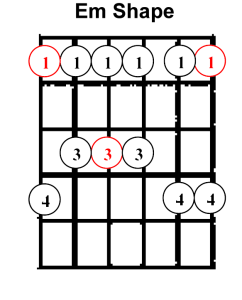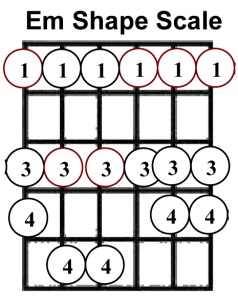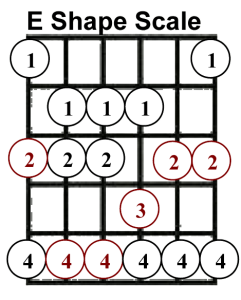…and the major, minor, harmonic minor and modes as the “meat” of your playing. Yes, Pentatonics are not just for beginners, everyone uses them regardless of how advanced they get. What’s great about our CAGED pentatonic shapes as they can really be the outline of just about every other scale, regardless of type.
If we take a look at how we get our pentatonic scales from our major scale, we see that the two scales are only two notes apart from their “full” scale
Major Pentatonic = Same as Major Scale only minus the 4 & 7
Minor Pentatonic = Same as Natural Minor Scale (Aeolian) only minus the 2 & 6
*Not sure how we build out major scale? Check this video lesson out!
Our Major Pentatonic as scale degrees = 1 – 2 – 3 – 5 – 6 then back to the root note
Our Minor Pentatonic as scale degrees = 1 – b3 – 4 – 5 – b7 then back to the root
Also, something to note is that Penta means “5” in Greek, notice how many notes we have in that scale? 5! So here’s something to take note of:
Triads = 3 Notes
7th Chord Arpeggios = 4 notes
Pentatonics = 5 notes
Modes/Scales = 7 notes
Okay so what does this mean for your playing? Well, it’s good news regardless of what you’re more familiar with, full scales or pentatonics. I’m going to go through scenario 1, where I assume you are more comfortable with your pentatonics. Let’s compare our Minor Pentatonic shape vs the Aeolian (Natural Minor) and Dorian Scale over only 1 shape, the Em shape.
Far Left = Minor Pentatonic Scale | Middle = Aeolian Scale | Far Right = Dorian Scale
When looking at them, can you seen the Minor Pentatonic as the outline for both scales? All we’re doing to each scale is adding in a “2” and for the Aelian “b6” and for the Dorian “(natural) 6”. Since each scale goes through the order of the notes twice, we actually have 2 octaves of both of the added notes… but that’s the only difference.
How about the Major Pentatonic? Let’s compare our Major Pentatonic shape vs the Major Scale (Ionian) and Mixolydian Scale over only 1 shape, the E shape.
Far Left = Major Pentatonic Scale | Middle = Ionian Scale | Far Right = Mixolydian Scale
When looking at them, can you seen the Major Pentatonic as the outline for both scales? All we’re doing to each scale is adding in a “4” and for the Ionian (Major Scale) the”7″ and for the Mixolydian the “b7”. Since each scale goes through the order of the notes twice, we actually have 2 octaves of both of the added notes… but that’s the only difference.
What if you know your Major Scale better than pentatonics? The reverse would then be true. You just take away the “4” and “7” from each major scale shape you know and there’s your major pentatonic. Take away the “2” and “6” from each minor scale shape you know and there’s your minor pentatonic.
I love having an easier way to go about learning scales and I hope this makes it a little less daunting when dealing with the modes, scales and pentatonic.
Video Lessons – Major Pentatonics, Minor Pentatonics, Major (Ionian) Scales, Minor (Aeolian) Scales, Mixolydian Scales & Dorian Scales







